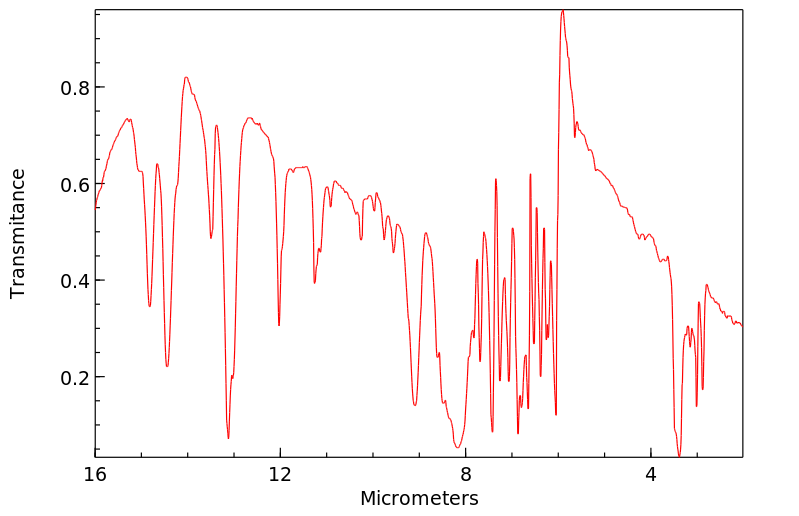3-硝基-4-双苯胺 | 4085-18-1
中文名称
3-硝基-4-双苯胺
中文别名
——
英文名称
4-amino-3-nitrobiphenyl
英文别名
3-nitro-4-amino-biphenyl;3-nitro-[1,1′-biphenyl]-4-amine;3-nitrobiphenyl-4-ylamine;2-nitro-4-phenylaniline;3-nitro-4-aminobiphenyl;3-nitrobiphenyl-4-amine;3-Nitro-4-biphenylamine
CAS
4085-18-1
化学式
C12H10N2O2
mdl
MFCD00054606
分子量
214.224
InChiKey
MQDYZYVWFUIEQU-UHFFFAOYSA-N
BEILSTEIN
——
EINECS
——
-
物化性质
-
计算性质
-
ADMET
-
安全信息
-
SDS
-
制备方法与用途
-
上下游信息
-
文献信息
-
表征谱图
-
同类化合物
-
相关功能分类
-
相关结构分类
计算性质
-
辛醇/水分配系数(LogP):3.4
-
重原子数:16
-
可旋转键数:1
-
环数:2.0
-
sp3杂化的碳原子比例:0.0
-
拓扑面积:71.8
-
氢给体数:1
-
氢受体数:3
安全信息
-
海关编码:2921499090
-
储存条件:存储温度应保持在2-8°C,并请避免光线直射。
SDS
上下游信息
-
上游原料
中文名称 英文名称 CAS号 化学式 分子量 —— 2,4-dinitrobiphenyl 78843-20-6 C12H8N2O4 244.207 4-乙酰氨基-3-硝基-联苯 4-acetamido-3-nitro-biphenyl 5393-46-4 C14H12N2O3 256.261 1-氯-2-硝基-4-苯基苯 4-chloro-3-nitro-1,1'-biphenyl 91331-25-8 C12H8ClNO2 233.654 2-硝基苯胺 2-nitro-aniline 88-74-4 C6H6N2O2 138.126 -
下游产品
中文名称 英文名称 CAS号 化学式 分子量 2-硝基-4-苯基-N-甲基苯胺 N-methyl-3-nitro-[1,1'-biphenyl]-4-amine 25877-78-5 C13H12N2O2 228.25 3-硝基联苯 3-nitro-1,1'-biphenyl 2113-58-8 C12H9NO2 199.209 —— 3-bromo-4-amino-5-nitro-biphenyl 136649-25-7 C12H9BrN2O2 293.12 4-溴-3-硝基联苯 4-bromo-3-nitrobiphenyl 27701-66-2 C12H8BrNO2 278.105 1-氯-2-硝基-4-苯基苯 4-chloro-3-nitro-1,1'-biphenyl 91331-25-8 C12H8ClNO2 233.654 1-溴-3-硝基-5-苯基苯 3-bromo-5-nitro-biphenyl 136649-26-8 C12H8BrNO2 278.105 1,4-二苯基-2-硝基苯 2'-nitro-p-terphenyl 60366-15-6 C18H13NO2 275.307 4-氟-3-硝基联苯 4-Fluoro-3-nitrobiphenyl 206879-57-4 C12H8FNO2 217.199 —— 2'',3'-dinitro-p-quaterphenyl 2499-69-6 C24H16N2O4 396.402 —— biphenyl-3,4-diamine 4458-39-3 C12H12N2 184.241
反应信息
-
作为反应物:描述:参考文献:名称:573.合成一些苯基-cinnolines,-phthalazines和-quinoxalines摘要:DOI:10.1039/jr9590002858
-
作为产物:描述:参考文献:名称:The Nitration of Certain Halobiphenyls. I. Nitro Derivatives of 4-Bromobiphenyl摘要:DOI:10.1021/ja01260a030
文献信息
-
Novel Dual-Targeting Benzimidazole Urea Inhibitors of DNA Gyrase and Topoisomerase IV Possessing Potent Antibacterial Activity: Intelligent Design and Evolution through the Judicious Use of Structure-Guided Design and Stucture−Activity Relationships作者:Paul S. Charifson、Anne-Laure Grillot、Trudy H. Grossman、Jonathan D. Parsons、Michael Badia、Steve Bellon、David D. Deininger、Joseph E. Drumm、Christian H. Gross、Arnaud LeTiran、Yusheng Liao、Nagraj Mani、David P. Nicolau、Emanuele Perola、Steven Ronkin、Dean Shannon、Lora L. Swenson、Qing Tang、Pamela R. Tessier、Ski-Kai Tian、Martin Trudeau、Tiansheng Wang、Yunyi Wei、Hong Zhang、Dean StamosDOI:10.1021/jm800318d日期:2008.9.11hospital- and community-acquired infections. The discovery and optimization of this novel class of antibacterials by the use of structure-guided design, modeling, and structure-activity relationships are described. Data are presented for enzyme inhibition, antibacterial activity, and in vivo efficacy by oral and intravenous administration in two rodent infection models.为了克服影响所有目前使用的抗生素种类的细菌耐药性问题,发现具有新颖作用机制的新型抗菌剂是必要的。细菌DNA促旋酶和拓扑异构酶IV是氟喹诺酮类抗生素的特征明确的临床验证靶标,它们通过抑制催化亚基发挥其抗菌活性。通过与它们的ATP位点相互作用来抑制这些靶标在临床上不太成功。提出了一种新型的低分子量,与ATP位点结合的回旋酶和拓扑异构酶IV合成抑制剂的发现和表征。苯并咪唑脲是两种酶的双重靶向抑制剂,并且对引起医院和社区获得性感染的各种相关病原体具有有效的抗菌活性。描述了通过使用结构指导的设计,建模和结构-活性关系来发现和优化这种新型抗菌剂。提供了在两种啮齿动物感染模型中通过口服和静脉内给药的酶抑制,抗菌活性和体内功效的数据。
-
Spirocyclic compounds申请人:Berk C. Scott公开号:US20070117824A1公开(公告)日:2007-05-24The present invention relates to a novel class of substituted spirocyclic compounds. These compounds can inhibit histone deacetylase and are suitable for use in selectively inducing terminal differentiation, and arresting cell growth and/or apoptosis of neoplastic cells, thereby inhibiting proliferation of such cells. Thus, the compounds of the present invention are useful in treating a patient having a tumor characterized by proliferation of neoplastic cells. The compounds of the invention may also be useful in the prevention and treatment of TRX-mediated diseases, such as autoimmune, allergic and inflammatory diseases, and in the prevention and/or treatment of diseases of the central nervous system (CNS), such as neurodegenerative diseases. The present invention further provides pharmaceutical compositions comprising the compounds of the instant invention and safe dosing regimens of these pharmaceutical compositions, which are easy to follow, and which result in a therapeutically effective amount of these compounds in vivo.
-
Multibond Forming Tandem Reactions of Anilines via Stable Aryl Diazonium Salts: One-Pot Synthesis of 3,4-Dihydroquinolin-2-ones作者:Réka J. Faggyas、Megan Grace、Lewis Williams、Andrew SutherlandDOI:10.1021/acs.joc.8b01910日期:2018.10.19A fast and effective one-pot tandem process that generates Heck coupled products from readily available anilines via stable aryl diazonium tosylate salts was developed. The mild and simple procedure involves rapid formation of aryl diazonium salts using a polymer-supported nitrite reagent and p-tosic acid, followed by a base-free Heck–Matsuda coupling with acrylates and styrenes. Using 2-nitroanilines
-
Synthesis of Structurally Diverse Benzotriazoles via Rapid Diazotization and Intramolecular Cyclization of 1,2‐Aryldiamines作者:Réka J. Faggyas、Nikki L. Sloan、Ned Buijs、Andrew SutherlandDOI:10.1002/ejoc.201900463日期:2019.9mild conditions, using a polymer‐supported nitrite reagent and p‐tosic acid. The functional group tolerance of this approach was further demonstrated with effective activation and cyclization of N‐alkyl, ‐aryl, and ‐acyl ortho‐aminoanilines leading to the synthesis of N1‐substituted benzotriazoles. The synthetic utility of this one‐pot heterocyclization process was exemplified with the preparation of a
-
Method of treating parastic protozoa with substituted benzimidazoles申请人:Bayer Aktiengesellschaft公开号:US05482956A1公开(公告)日:1996-01-09The present invention relates to the use of benzimidazoles of the formula (I) ##STR1## in which X.sup.1, X.sup.2, X.sub.3, X.sup.4, R.sup.3 and R.sup.5 are described herein and these compounds are agents for combatting parasitic protozoa, in particular coccidia.本发明涉及使用以下公式(I)所示的苯并咪唑类化合物:##STR1## 其中X.sup.1、X.sup.2、X.sub.3、X.sup.4、R.sup.3和R.sup.5按文中描述,这些化合物是用于对抗寄生原虫的药剂,特别是球虫。
表征谱图
-
氢谱1HNMR
-
质谱MS
-
碳谱13CNMR
-
红外IR
-
拉曼Raman
-
峰位数据
-
峰位匹配
-
表征信息
同类化合物
(βS)-β-氨基-4-(4-羟基苯氧基)-3,5-二碘苯甲丙醇
(S,S)-邻甲苯基-DIPAMP
(S)-(-)-7'-〔4(S)-(苄基)恶唑-2-基]-7-二(3,5-二-叔丁基苯基)膦基-2,2',3,3'-四氢-1,1-螺二氢茚
(S)-盐酸沙丁胺醇
(S)-3-(叔丁基)-4-(2,6-二甲氧基苯基)-2,3-二氢苯并[d][1,3]氧磷杂环戊二烯
(S)-2,2'-双[双(3,5-三氟甲基苯基)膦基]-4,4',6,6'-四甲氧基联苯
(S)-1-[3,5-双(三氟甲基)苯基]-3-[1-(二甲基氨基)-3-甲基丁烷-2-基]硫脲
(R)富马酸托特罗定
(R)-(-)-盐酸尼古地平
(R)-(-)-4,12-双(二苯基膦基)[2.2]对环芳烷(1,5环辛二烯)铑(I)四氟硼酸盐
(R)-(+)-7-双(3,5-二叔丁基苯基)膦基7''-[((6-甲基吡啶-2-基甲基)氨基]-2,2'',3,3''-四氢-1,1''-螺双茚满
(R)-(+)-7-双(3,5-二叔丁基苯基)膦基7''-[(4-叔丁基吡啶-2-基甲基)氨基]-2,2'',3,3''-四氢-1,1''-螺双茚满
(R)-(+)-7-双(3,5-二叔丁基苯基)膦基7''-[(3-甲基吡啶-2-基甲基)氨基]-2,2'',3,3''-四氢-1,1''-螺双茚满
(R)-(+)-4,7-双(3,5-二-叔丁基苯基)膦基-7“-[(吡啶-2-基甲基)氨基]-2,2”,3,3'-四氢1,1'-螺二茚满
(R)-3-(叔丁基)-4-(2,6-二苯氧基苯基)-2,3-二氢苯并[d][1,3]氧杂磷杂环戊烯
(R)-2-[((二苯基膦基)甲基]吡咯烷
(R)-1-[3,5-双(三氟甲基)苯基]-3-[1-(二甲基氨基)-3-甲基丁烷-2-基]硫脲
(N-(4-甲氧基苯基)-N-甲基-3-(1-哌啶基)丙-2-烯酰胺)
(5-溴-2-羟基苯基)-4-氯苯甲酮
(5-溴-2-氯苯基)(4-羟基苯基)甲酮
(5-氧代-3-苯基-2,5-二氢-1,2,3,4-oxatriazol-3-鎓)
(4S,5R)-4-甲基-5-苯基-1,2,3-氧代噻唑烷-2,2-二氧化物-3-羧酸叔丁酯
(4S,4''S)-2,2''-亚环戊基双[4,5-二氢-4-(苯甲基)恶唑]
(4-溴苯基)-[2-氟-4-[6-[甲基(丙-2-烯基)氨基]己氧基]苯基]甲酮
(4-丁氧基苯甲基)三苯基溴化磷
(3aR,8aR)-(-)-4,4,8,8-四(3,5-二甲基苯基)四氢-2,2-二甲基-6-苯基-1,3-二氧戊环[4,5-e]二恶唑磷
(3aR,6aS)-5-氧代六氢环戊基[c]吡咯-2(1H)-羧酸酯
(2Z)-3-[[(4-氯苯基)氨基]-2-氰基丙烯酸乙酯
(2S,3S,5S)-5-(叔丁氧基甲酰氨基)-2-(N-5-噻唑基-甲氧羰基)氨基-1,6-二苯基-3-羟基己烷
(2S,2''S,3S,3''S)-3,3''-二叔丁基-4,4''-双(2,6-二甲氧基苯基)-2,2'',3,3''-四氢-2,2''-联苯并[d][1,3]氧杂磷杂戊环
(2S)-(-)-2-{[[[[3,5-双(氟代甲基)苯基]氨基]硫代甲基]氨基}-N-(二苯基甲基)-N,3,3-三甲基丁酰胺
(2S)-2-[[[[[((1S,2S)-2-氨基环己基]氨基]硫代甲基]氨基]-N-(二苯甲基)-N,3,3-三甲基丁酰胺
(2S)-2-[[[[[[((1R,2R)-2-氨基环己基]氨基]硫代甲基]氨基]-N-(二苯甲基)-N,3,3-三甲基丁酰胺
(2-硝基苯基)磷酸三酰胺
(2,6-二氯苯基)乙酰氯
(2,3-二甲氧基-5-甲基苯基)硼酸
(1S,2S,3S,5S)-5-叠氮基-3-(苯基甲氧基)-2-[(苯基甲氧基)甲基]环戊醇
(1S,2S,3R,5R)-2-(苄氧基)甲基-6-氧杂双环[3.1.0]己-3-醇
(1-(4-氟苯基)环丙基)甲胺盐酸盐
(1-(3-溴苯基)环丁基)甲胺盐酸盐
(1-(2-氯苯基)环丁基)甲胺盐酸盐
(1-(2-氟苯基)环丙基)甲胺盐酸盐
(1-(2,6-二氟苯基)环丙基)甲胺盐酸盐
(-)-去甲基西布曲明
龙蒿油
龙胆酸钠
龙胆酸叔丁酯
龙胆酸
龙胆紫-d6
龙胆紫







